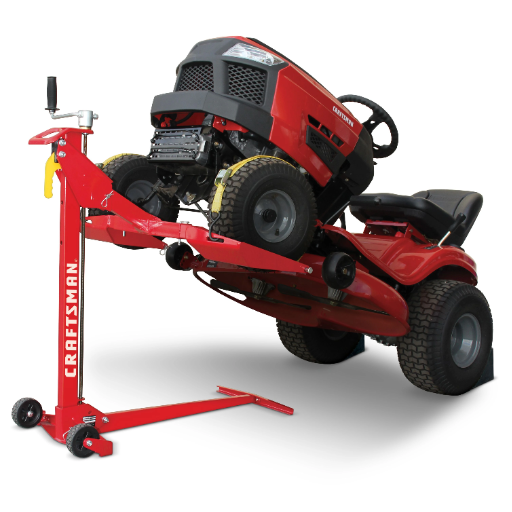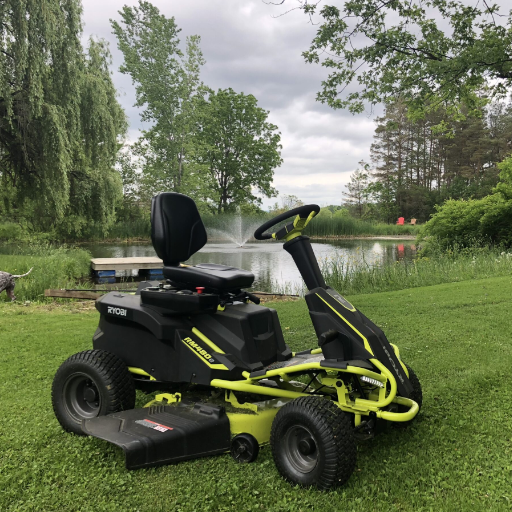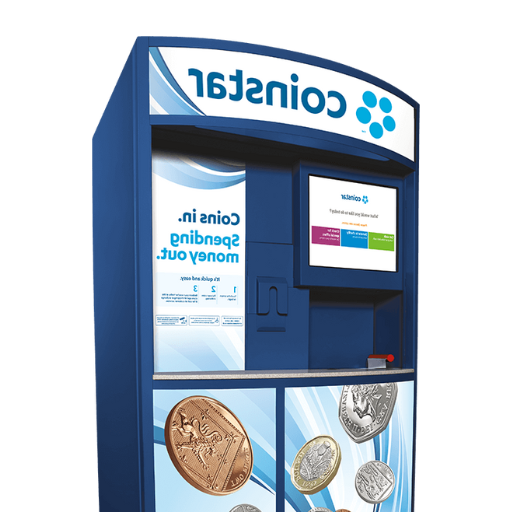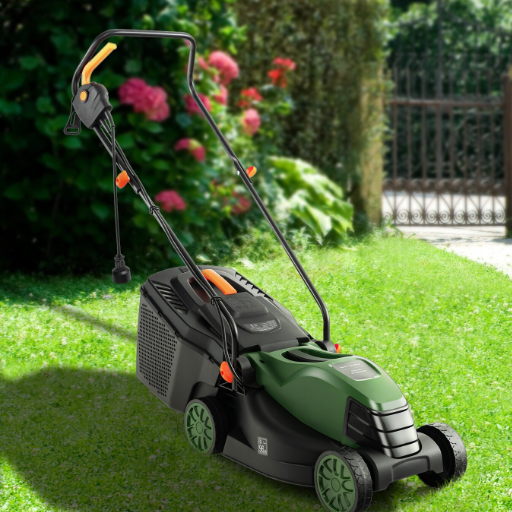The selection of the wood is one of the most important considerations during laser engraving. This selection dramatically affects the project’s accuracy, quality, and final outputs. Different woods have different grains, densities, and tolerances to lasers, making some better than others. This article will focus on the technicalities of wood selection for laser engraving by outlining the different types, their strengths, and their weaknesses. Experts and novices alike can benefit from knowing these woods and unleashing the full potential of laser engraving.
What factors should I consider when choosing wood for laser engraving?

When selecting wood for laser engraving, several critical factors must be considered to ensure optimal results:
- Density and Hardness: Softer woods, such as basswood or pine, are easier to engrave and require less laser power, while hardwoods like oak or maple deliver finer details but demand higher laser intensity.
- Grain Pattern: Woods with delicate, uniform grain patterns—like cherry or birch—produce cleaner and more precise engravings, as irregular or coarse grains can disrupt the detail.
- Moisture Content: Ensure the wood is adequately dried (low moisture content); high moisture levels can lead to inconsistent burns and excessive smoke production.
- Color Contrast: Lighter-colored woods, such as alder or maple, provide better contrast for darkened engraving marks, enhancing visibility.
- Resin or Oil Content: Woods with high resin or oil content, like cedar, can produce excessive smoke and residue, potentially reducing engraving efficiency and requiring frequent equipment maintenance.
- Surface Finish: Opt for untreated or lightly finished wood to ensure the laser can adequately penetrate the surface layer without interference from coatings.
By carefully evaluating these factors, you can select the most suitable wood for your specific laser engraving project and achieve high-quality results.
How does wood grain affect laser engraving results?
The grain of the wood has a lot of factors that affect the engraving results, such as the quality, depth, and total result of the engraving. The variations in the grain density may cause burning erratically since the more challenging parts of the wood, like more complex grain lines, resist the laser more than the softer areas. This leads to an irregular depth of engravings, uneven coloration, and sometimes both. In addition, coarse and grain patterns can disrupt the fine details, leading to poorly-drafted designs. However, the engraving results can be optimized in fine-grained woods with a consistent density, such as maple and basswood, where the leaves adjust the laser settings to the wood’s physical features.
What role does wood density play in laser cutting and engraving?
Laser engraving and cutting wood go hand in hand, and the most critical piece of information is that wood density is the most vital since it governs the energy intake and absorption of the material and the efficiency of cutting. For example, denser materials such as oak and walnut require the laser power to be higher so that clean-cut zones and sharp engraving depths can be cleanly done as the material is much more complex and, as such, not easily vaporized. On the other hand, pine and cedar are less dense and are thus much easier to work with. However, because they are less dense, they also have the downside of being burnt or charred rather quickly. In adjusting these differences, changing the speed and power of the laser are of utmost importance in guaranteeing results regardless of the density of the wood.
Why is moisture content important for laser engraving wood?
Laser engraving on wood requires precise control over moisture content, as this will directly affect the quality and efficiency of the engraving. Moisture in wood often results in higher absorption of laser energy, which sometimes results in inconsistent engraving of varying depths, imprecise cutting, and excessive charring or smoke. In contrast, wood with very low moisture content tends to burn too fast, leading to discoloration and an uneven appearance. An ideal moisture level of around 6%-8% is best suited, enabling better energy absorption while reducing imperfections in the final engraving. Care should be taken for wood with suitable moisture content to achieve consistent quality results.
Which types of wood are best for beginners who are laser engraving?

For novices, basswood, alder, and cedar are beginner-friendly options as they are softer and have uniform grain. Burning and charring are risks for engravings, but these woods minimize the risk due to being easier to work with. Plywood, specifically designed for laser work, is also a reasonable option because it is made with high-quality finishes and has no or very few voids. Oak and Maple, although appealing, should be avoided by beginners, as their hardwood nature makes them denser with variable grains, making it challenging to obtain desired results.
Is plywood suitable for laser engraving projects?
Plywood can be an excellent option for laser engraving projects when the correct type is chosen. Laser-grade plywood, also referred to as laser-friendly, is specially made to ensure consistent results, and it works perfectly with laser cutters. The type of plywood usually has an external face veneer without internal voids and irregular glue layers that can affect the engraving causing burning and uneven cuts. Plywood that contains bonded sheets of natural wood gives surfaces that can be engraved with high precision. Standard plywood with high concentrations of adhesives or poor core materials will produce a lot of smoke and charring, so these should be avoided. Always check that the plywood is not treated with formaldehyde and is designed for laser work so safety and results are guaranteed.
What makes maple a popular choice for laser engraving?
Another great choice for laser engraving maple plywood is its fine and even grain, light color, and the exquisite contrast it creates with engraved designs. This type of wood is hard, so it is durable, but due to its moderate density, it does not have too many charring burns, which results in professional and clean surfaces.
How does cherry wood perform in laser engraving?
The smooth, even grain merged with cherry wood’s warm and rich color makes it excel in laser engraving. These features make it possible to achieve extensive contrast and intricate detailing. Cherry wood is more complicated and provides more durability and intricate detail capture without excessive burning or charring. Its dense composition ensures consistent results through adjustment of the laser setting, making it possible to avoid over-penetration or unbalanced marks. Combining workability and aesthetic appeal makes cherry wood favored for high-quality engraved products.
What are the top wood species for professional laser engraving?

Several wood species stand out for their superior performance in professional laser engraving due to their characteristics of uniform grain, durability, and aesthetic appeal:
- Cherry Wood – Renowned for its smooth texture and rich natural color, cherry wood offers high contrast and detail in engravings. Its uniform grain minimizes burning or charring, delivering clean and professional results.
- Maple Wood – A popular choice for its light color and fine, consistent grain, it produces sharp and precise engravings. It is softer than cherry, making engraving easier without requiring high-power laser settings. Both hard maple and soft maple varieties are versatile options.
- Birch Plywood – Birch plywood combines affordability with excellent engraving quality. Its light tone and engineered stability make it an ideal material for detailed and delicate designs. The smooth finish of birch plywood allows for crisp marks and even shading.
These wood species are highly regarded for their ability to produce professional-quality engravings with minimal adjustments in laser settings, making them dependable choices for consistent and intricate work.
Why is walnut ideal for high-contrast laser engravings?
Walnut is ideal for deep, high-contrast laser engravings. It is moderately complex and possesses a rich brown color with a fine and uniform grain, serving as a splendid backdrop for intricate designs. If the correct laser parameters are used, its moderate hardness ensures precision during engraving while avoiding excessive burns and deformation. The unaltered wood and engraved areas bear natural contrast, which makes intricate patterns and designs more visible. For that reason, walnut is widely used on high-quality application pieces such as artistic custom furniture, plaques, and even carved sculptures. Its durability helps ensure long-term results while maintaining aesthetic appeal and structural integrity over time.
How does oak respond to laser engraving and cutting?
Laser cutting and engraving of oak are equally efficient. Its strength, as well as its distinctive grain patterns, helps with the ease of engraving but does require some calibration. The coarse-grained edge produces nice, detailed engravings if some clarity is sacrificed; however, adequate laser power must be met while cutting to ensure clean edges and proper ventilation to control smoke and debris. With proper caliber of settings and preparation, oak becomes visually striking and durable for different applications.
What unique properties make bamboo great for laser engraving?
Bamboo’s fine and even surface makes it an ideal material for laser engraving due to its ability to achieve precise and sharp designs. In addition, bamboo’s natural hardness and durability make it highly resistant to splintering and burning during the engraving process, ensuring a quality result. Bamboo is also very sustainable and readily available as it is usually processed in layered or laminated form, increasing engraving consistency. Combined with bamboo’s aesthetic appeal and eco-friendly nature, these features make it highly desirable for engraved personalized items, decor, and promotional products.
How does wood thickness affect laser engraving and cutting?
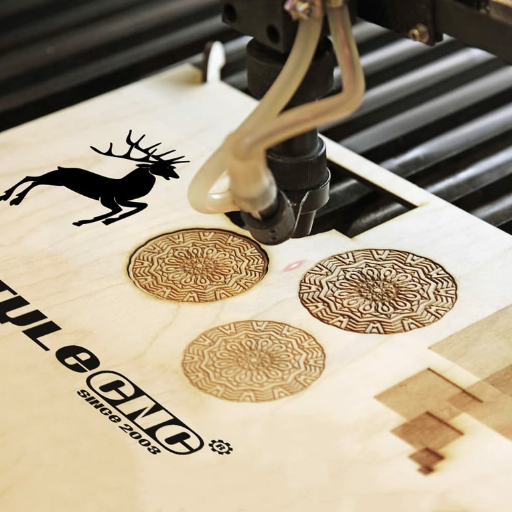
The thickness of wood is an essential factor when it comes to laser engraving and cutting, as it directly affects the power level and speed for use, as well as the effectiveness of the work done. When working with thicker wood, high electric power combined with low speed is needed to get clean cuts; however, this can result in burning and charring along the edges. For engravings, thicker pieces of wood mean deeper cuts, and while this may be appealing from the perspective of completing the job, it can potentially increase the time taken to complete the task. Changing the laser’s focus has to be done very carefully because, without precision, the resulting engraving or cut will not have a desirable quality. Still, it does help reduce the amount of material wasted.
What is the ideal thickness for laser-cut wooden products?
Most laser-cut wooden products have a thickness preference of 1/8 inch (3mm) to 1/4 inch (6mm). This range helps maximize the cutting efficiency of standard laser cutters while maintaining the strength of the product. Wood can be intricately detailed at the thinner spectrum of 1/8 inch due to lower power demand and faster cutting speeds. In contrast, 1/4-inch lumber can be used for projects that require thicker and sturdier pieces; however, achieving clean edges will necessitate higher power and slower cutting speeds. To avoid complications such as charring and incomplete cuts, the thickness of the material needs to be proportionate to the power capacitance of the laser machine and the design.
How does thin wood veneer perform in laser engraving?
Thin wood veneers yield smooth and precise outcomes with distinct intricate patterns at a high resolution whilst being laser engraved. The veneer’s uniform thickness and fine grain allow for deeply etched engraves without excessive burning or charring. As delicate as the material is, using low power levels and moderate speeds is essential to prevent scorching, which, if not, can easily damage the veneer’s surface. Its natural beauty and ability to withstand multiple designs allow for custom finishes and flexible uses such as inlaid artwork, signs, and decorative pieces. During the engraving process, the workpiece should always be secured, preferably with a clamp, so that it does not warp or shift, which can distort the accuracy of the engraving.
What are the best engineered woods for laser engraving?

The wood types most suitable for laser engraving are usually MDF (Medium-Density Fiberboard), plywood, and HDF (High-Density Fiberboard). However, I prefer MDF due to its even and smooth surface that guarantees splinter-free, balanced engraving results. Plywood, particularly laser-grade or Baltic birch plywood, is also incredibly useful since it is strong and well-processed. Moreover, HDF works well since it has a stable, dense surface ideal for accurate engraving without bending.HDF works well since it has a stable, dense surface suitable for precise engraving without bending. When working with these materials, choosing lower quality, formaldehyde-free pieces and changing the laser settings to the correct depth to get the best results and minimize risk is essential.
How does MDF compare to natural wood for laser engraving?
MDF and natural wood have different properties that affect laser engraving quality. When working with intricate designs, MDF tends to “grain” the best and offers smooth, even surfaces for the best consistency. Unlike natural wood, MDF does not have grains, leading to uneven burning or discoloration during processing. Nevertheless, natural wood possesses the unique charm of beauty and appeals to the engraved design due to its grain and texture, adding depth to beauty. On the other hand, natural wood is more susceptible to warping, knotting, and irregularities alternating on the surface, making offering precision engravings difficult. Apart from that, many other natural wood varieties are harder to come by than MDF, which is available almost everywhere. Also, while MDF is cheaper, it produces more dust and fumes during engraving, making it necessary to have adequate ventilation and safety best practices.
What advantages does Baltic birch plywood offer for laser projects?
Baltic birch plywood is advantageous for laser projects in many ways. Its void-free core guarantees consistent cutting and engraving and helps minimize imperfections. The multiple veneer layers also provide strength and durability, making it ideal for detailed and structurally sound engravings. It is also easy to achieve a smooth surface finish that is visually appealing. Its availability in multiple thicknesses further improves its quality reputation for professionals and hobbyists.
How do different laser types affect wood selection for engraving?

The varying power, precision, and wavelength of different lasers carve their effects on the selection of wood for engraving. While CO2 lasers are not as regrettably misplaced, they are still dominant in the cut and engrave precision of various wood types in woodworking. Precise control settings are optimal for denser hardwoods, but softer woods tend to char more easily. Fiber lasers are far more misplaced in organic materials like wood; they are practically restricted to metals and plastics. Diode lasers struggle with dense and composite materials, rendering them less powerful, but they perform splendidly on soft or thin woods. With the proper selection of laser type, results are sure to be satisfactory about the wood’s density, grain, and moisture content.
What woods work best with CO2 laser engraving machines?
CO2 laser engraving machines are effective for many types of wood, but special attention can be paid to certain wood types for the best results. For example, maple, cherry, and alder have fine and consistent grains and are uniform in density, creating ideal engraving conditions. Soft basswood is also excellent for engraving as it does not create much charring. Economic birch plywood is commonly used due to reasonable pricing and balance in engraving performance, however care must be made to the type of adhesive used in the plywood. Denser hardwoods, oak, and walnut, for instance, can also be engraved, although they require higher power settings and slower speeds to achieve desirable outcomes. On the other hand, pine and other resin-rich woods can lead to inconsistent engravings and a lot of smoke or residue. Choosing a wood type with the least knots, uniform density, and low moisture content will yield ideal results when using CO2 lasers.
How does fiber laser performance vary across wood types?
Because of their CO2 laser knife’s far better efficiency, fiber lasers are impractical for wood processing. Fiber lasers are known to be more effective for marking metal wires and some types of plastics. Because wood is a nonmetallic substance, it is poorly capable of absorbing fiber laser energy, which results in limited engraving depth and quality. It is possible to achieve some marking on softer woods with fiber lasers, but the consistency and precision are nowhere near as good as a CO2 laser.
What safety considerations should I keep in mind when laser engraving wood?
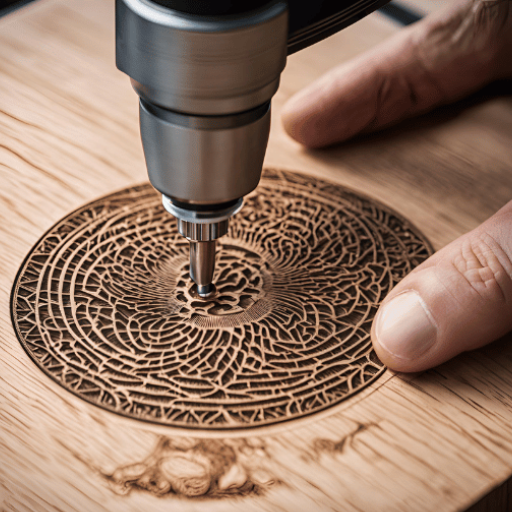
When laser engraving wood, the safety of the user and equipment remains at the forefront of priorities. To begin with, proper ventilation or air filtration systems must be employed to deal with the fumes and smoke produced during the engraving since some woods can potentially release dangerous particulates and chemicals when burned. Use appropriate protective eyewear for the specific wavelength laser to safeguard against exposure to the laser beam. Fire extinguishers must be employed because wood is combustible and may ignite if enough heat is applied. Furthermore, routinely cleaning and servicing the laser system is required to remove any residue that might pose a fire hazard and increase the chances of equipment failure. Lastly, do not engrave treated wood or other materials with unknown coatings that may produce harmful gas when heated.
Which woods should be avoided due to harmful fumes during laser engraving?
Because some woods emit noxious fumes while laser engraved, they should be avoided at all costs. For instance, plywood, MDF, and pressure-treated lumber often release gasses when burned from adhesive chemicals such as formaldehyde. Exotic hardwoods like teak may also be dangerous due to their high natural oil content, which can irritate and/or produce toxic fumes while being lasered. Furthermore, wood coated with paint, varnish, or other chemical finishes should also be avoided to lessen the risk of hazardous fume emissions during engraving. Always choose uncoated and untreated hardwoods for ideal results during laser engraving.
What ventilation is needed when laser cutting and engraving wood?
Regarding laser cutting and engraving wood, ventilation is critical for safety and maintaining proper air quality. I recommend a dedicated exhaust or fume extraction system that can adequately remove smoke, soot, and other harmful particulates generated during the process. To capture fine particles and neutralize fumes, a combinationof HEPA and activated carbon filter would be ideal. In the absence of an exhaust system, ensure that windows and fans are available to allow for air circulation. Remember to always prioritize ventilation in order to minimize exposure to toxic emissions and safeguard health and equipment.
References
Frequently Asked Questions (FAQ)
Q: What are the best woods for laser engraving?
A: The best woods for laser engraving include maple, cherry, walnut, oak, and birch. These woods are popular due to their density, grain patterns, and ability to produce precise, high-contrast engravings. Lighter woods like maple and birch are ideal for laser engraving as they create a dark, visible contrast when engraved.
Q: What factors should I consider when choosing wood for laser cutting and engraving?
A: When choosing wood for laser cutting and engraving, consider wood density, grain pattern, color, resin content, and moisture level. These factors can affect the engraving quality, cutting depth, and overall results. Consider your machine’s laser power and your project’s specific requirements.
Q: How does wood density affect laser engraving results?
A: Wood density plays a crucial role in laser engraving. Denser woods generally require more laser power but can produce finer details and cleaner cuts. Softer woods engrave more quickly but may not hold as much detail. The right wood for your laser engraving project depends on the desired outcome and the capabilities of your laser machine.
Q: Are there any woods that should be avoided for laser engraving?
A: Yes, some woods should be avoided for laser engraving. Woods with high resin content, such as pine or cedar, can produce harmful fumes when laser cut. Additionally, pressure-treated woods, MDF, and some plywood with toxic adhesives should be avoided as they can release dangerous chemicals when exposed to a laser beam.
Q: How can I achieve the best results when engraving on wood?
A: Select the right wood for your laser and project to achieve the best results when engraving on wood. Ensure the wood surface is clean and flat. Adjust your laser settings (power, speed, and frequency) based on the specific wood type. Consider doing test cuts on scrap pieces before engraving your final product. Proper focus and consistent wood thickness are also crucial for optimal results.
Q: What type of wood is ideal for intricate laser engraving designs?
A: Hardwoods with a fine, tight-grain structure are ideal for intricate laser engraving designs. Maple, cherry, and birch are excellent choices as they can hold fine details well. These woods also contrast the engraved and non-engraved areas, making the design stand out.
Q: How does the color of wood affect laser engraving?
A: The color of wood significantly affects laser engraving. Lighter woods generally contrast the engraved and non-engraved areas, making the design more visible. Darker woods may require higher laser power to achieve noticeable results. Some engravers prefer lighter woods for detailed work and darker woods for creating a more subtle, elegant look.
Q: Can I use plywood for laser engraving projects?
A: Yes, plywood can be used for laser engraving projects. However, choosing high-quality plywood with minimal voids and non-toxic adhesives is essential. Baltic birch plywood is a popular choice for laser cutting and engraving due to its consistent layers of wood veneer and good engraving properties. Be cautious with lower-quality plywood as it may contain gaps or inconsistencies that can affect the engraving quality.





